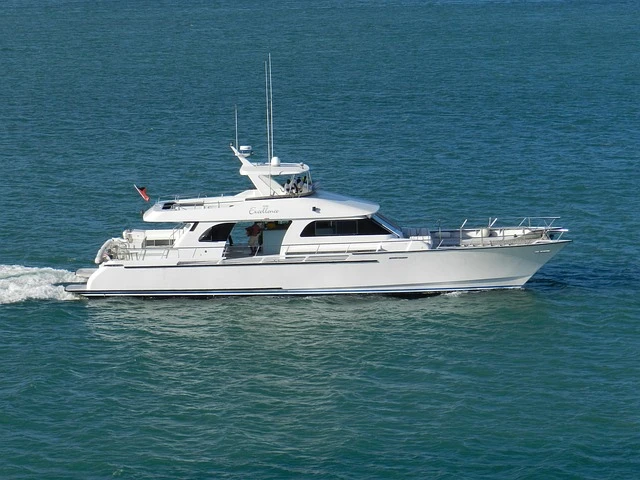10 March 2025
Buying a Monohull: Advantages and Disadvantages
Buying a monohull has advantages such as adaptability to bad weather and good upwind performance, as well as disadvantages such as poor stability and limited space. In this guide, we'll break down the advantages and disadvantages of monohulls to help you understand whether this type of boat meets your needs so you can make an informed buying decision.

What is a monohull boat?
A monohull boat is a traditional vessel with only one hull that is in direct contact with the water, which is distinctly different from boats with multiple hulls such as catamarans and trimarans. In terms of design, monohulls present an extremely rich diversity of sizes spanning a wide range, from small sailboats suitable for recreational sailing on calm afternoons to large luxury yachts with very luxurious interiors. Thanks to this variety of designs and sizes, monohulls are very versatile and perfectly suited for both leisure sailing and competitive sailing.
Advantages of buying a monohull boat
When you're in the market for a boat to buy, monohulls offer significant advantages in many ways. Here are the advantages of buying a monohull boat:
Adaptability to bad weather
A monohull boat excels in rough weather, which is one of its most significant advantages. Because of its unique deep-water design, it can easily break waves when faced with rough seas. The waves pass right through the bottom of the boat instead of slamming against the hull. This excellent coping ability makes it the best choice for offshore sailing.
High aspect ratio
The high aspect ratio of the monohull is also a significant advantage. Aspect ratio refers to the proportional relationship between the width of the boat and its height or draft. Typically, monohulls have a high aspect ratio, a feature that allows them to cut through the water with minimal resistance, improving sailing efficiency.
Excellent upwind sailing performance
A monohull has a significant advantage in sailing where upwind performance is critical. Its unique construction and performance allow it to sail closer to the wind, which not only enhances navigation, but also improves sailing efficiency.
Versatile and aesthetically pleasing
Monohulls are versatile, ranging in size from small sailboats to large luxury yachts. In terms of sailing style, whether you prefer a vintage style, a classic design with elegance and atmosphere, or a modernist look that pursues a sense of fashion and technology, monohulls can accurately match your taste.
Excellent self-righting ability
Monohull boats you have excellent auto righting ability, which can guarantee the safety when sailing. In the unfortunate event that a monohull capsizes while sailing, its weighted keel will quickly come into play to right itself, which essentially reduces the risk of the boat capsizing due to accidents in complex waters, giving the owner a safer experience while on the water.
Disadvantages of Buying a Monohull Boat
While there are and many advantages to monohull boats, it is also important to consider the disadvantages when purchasing one, which may affect the experience while sailing. The following are the disadvantages of buying a monohull boat:
Poor stability compared to multihulls
Compared to multihulls, monohulls are more likely to tilt when wind conditions change, and this tilting can sometimes make it uncomfortable for those on board to move around, especially for inexperienced sailors for whom maneuvering and balancing on a tilted monohull is more challenging.
Limited space
Unlike catamarans and trimarans that have wide beams and spaces, monohulls have limited space. On long journeys, it is important to have sufficient supplies for a smooth voyage, but the limited space on a monohull makes it difficult to store large quantities of supplies. In addition, when monohulls are used for commercial operations and need to carry many passengers and carry a large amount of cargo, they also cannot provide sufficient space.
Poor performance in light winds
Monohulls usually perform poorly in light wind conditions. When the wind is light, its large wet surface area and high buoyancy make it difficult for the vessel to gain sufficient forward speed, and a planned trip may be significantly delayed due to this slow sailing speed, causing much inconvenience to the traveler.
 Report
ReportNetizen comment
Comments

Leave the comment
Relevant Recommendation
Yacht Guide
Most Recommended




